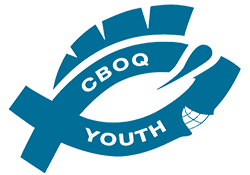The following is an excerpt from our book Faith Formation 2.0.
There’s an old and wise saying: “It takes a village to raise a child.” This is just as true in a child’s faith development. Ultimately, we recognize it is God who desires children to develop profound, life-changing faith in Jesus. No one person is responsible for the entire faith development of a child. After all, the Apostle Paul reminds us that God assigns various roles and responsibilities to different people, recognizing that no one role can complete the
discipleship process on its own.
In a church ministry context, we identified four key roles that complement one another in that faith development process. In some ways, it’s like a pocket-coiled mattress. All individuals are connected into the base, which is the church governed by the church leaders. Each coil or individual is supported by the parent (hopefully) and a mentor. The various ministries the individual is part of are highly visible connection points.
In this section, we will clarify the influence of the key roles and how they are complemented by the other roles.
1. Parents
As noted in the previous section on the significance of parental influence, parents play a key role in a child’s development, including faith development. From a sociological perspective, the majority of parents are the dominant influencers, especially for very young children. As a child grows older, influencers will come from a growing range of sources, including people, content and life circumstances.
In an ideal world, parents or guardians would be the catalysts in their children’s faith formation. They would begin teaching and passing on the stories of God to their children, training them in the ways of the Lord. In essence, they would be making disciples who happen to be their children.
However, even in an ideal world, parents are not the sole influence. As children move into adolescence, they attempt to make sense of this faith that has been passed to them. To do so, children will question, wrestle, doubt and revisit their faith. This is what makes the community of God so essential in faith formation. Parents can draw on others to come alongside their children as voices of influence—not to be a mouthpiece of the parents, but to pass on the stories of God and be living examples of God’s love and truth. This isn’t to say parents can now shift the responsibility onto others, but rather they share the responsibility more broadly with others.
In our world today, we recognize that not all children have positive role modelling happening at home, specifically in regards to a parent or parents who are not modelling an active Christian faith. In some circumstances, parents may be neglectful or absent in this role. In these cases, it is even more imperative that churches come alongside the children and, if possible, also alongside the parents to see the whole family engage in this spiritual journey.
What parents should look for in:
- Church leaders: As the overseers in the discipleship process for all its church members, church leaders can help parents understand how they and their children fit into the “big picture” of faith development. They help to provide the 10,000-foot look at ways the church can support families in discipleship, both individually and as a collective.
- Sharing Life relationships: These individuals provide voices of influence specific to their children. Parents can seek out key individuals to invite into their children’s lives. Just as important is parents having for themselves mentors and trusted older fellow believers to support them at each stage of their children’s lives.
- Ministry leaders: They provide shared opportunities to understand and stretch faith for all children and youth. Parents can look to ministry leaders such as a Sunday school teacher or a youth leader for key resources to help understand their children and ways to deepen their own parenting.
2. Church Leaders
In some churches, the only time the church leaders get involved in children or youth ministry is when there’s a problem. Sometimes, they accept the ministry report at the annual meeting, discuss details like the number of participants and the budget items, and move on. Church leaders, whether they be the senior pastor, elders, deacons or the church council, need to see their role as being responsible for the intentional and strategic disciple-making
process in their church context. After all, Jesus’ mandate to his church via his disciples is to go and make disciples. Even in a congregational model, while the congregation has the final say on major issues, the church leadership is entrusted with the day-to-day oversight of the church’s operations. While the leaders may not be intimately involved in every church member’s development, they need to understand the overall scope of the faith formation process and how people can grow closer to Jesus and his church at different stages in their journey. With that knowledge, church leaders can ensure all the appropriate resources and ministries are available (as far as possible) in their context to all members of the family.
As the above diagram suggests, church leaders are vital in both the establishment and the solidification of that foundation so that the church as a whole knows the direction of discipleship in their church’s understanding of it.
What church leaders should look for in:
- Parents or guardians: These people typically have lived the longest with their children. While they may not understand everything that’s happening with their children or how to respond, they usually know them best. Ask parents for input in how they see their children aredeveloping, and what kinds of supports the children and/or the parents need.
- Sharing Life relationships: If Sharing Life is an ethos a church as a whole embraces, church leaders should expect and equip ALL their Christ-following members to be engaged in a mentoring or Sharing Life relationship. While church leaders aren’t expected to coordinate those connections, they can hold congregants accountable and ensure they are provided with resources to connect with others.
- Ministry leaders: While church leaders oversee the overall framework for discipleship, ministry leaders give insights on how it can work best. Ministry leaders take ownership in how a particular ministry group (e.g. toddler, primary, junior high, senior high) can effectively disciple children and youth in conjunction with the other ministry resources in churches.
3. One-on-One (Sharing Life) Relationships
One-on-one intergenerational relationships are a critical need for healthy faith development in children, especially for those in their adolescent years. Each Christ-following member of the church has a mandate to pass on the stories and teachings of God to the next generation. While some may choose to influence as ministry leaders, all Christians have
the responsibility to do so no matter what their ages. (We will discuss the concept of Sharing Life).
What Sharing Life friends should look for:
- Parents and guardians: Parents can give day-to-day insights on what their children are experiencing and other factors that could impact these children’s faith formation.
- Church leaders: Church leaders need to give clarity in the biblical mandate of discipleship and how they as individuals can contribute to it.
- Ministry leaders: Ministry leaders are usually the primary teachers of faith understanding and knowledge. By knowing what’s being taught, the Sharing Life friends can help the students unpack the teachings and help make them applicable to the students.
4. Ministry Leaders
Ministry groups (e.g. children, youth, seniors) give a common-ground foundation for a particular age and stage. They establish the common metanarrative and vernacular of the group in age-appropriate terms. Usually, ministry leaders are specialists in that age group, and have key insights on the culture of that age range. The uniqueness of age-specific ministries is their opportunities toward outreach into the community. While a church would invite a whole family to participate together, most children and especially youth first-points-of-contact happen through their peers. The age-specific ministry is a bridge between the invited friends and the church community. As that
individual becomes more established hopefully in their faith, they become grounded within the church community.
What ministry leaders can look for in:
- Parents and guardians: Parents can give day-to-day insights on what their children are experiencing, and other factors that could impact the children’s faith formation.
- Church leaders: Church leaders need to set the overall direction and understanding of
discipleship. - Sharing Life relationships: Sharing Life friends need to take the teaching done within
the ministry group and help students apply it in their lives.
BONUS: Peer-to-Peer Relationships
Peer-to-peer, age-similar friendships are unique from the other roles. As children get older, those friendships become stronger influences. Since the peers are on journeys of their own, they may not want or be able to grasp the overall faith formation process. Nonetheless, whether or not it’s intended, peers play a key role in the faith development. By caring for people individually—taking time with each one—the church can help establish a more fertile space for faith growth as a peer group.
In many ways, the way these four roles engage with one another is a dance. There are intricacies and layers of engagement that cannot be expressed in a simple matrix. (We would need a 3D virtual model to show how all four roles dance together.) As a dance, each role has unique responsibilities and dependencies to operate in harmony to support a child or youth in his or her faith development.




Leave A Comment